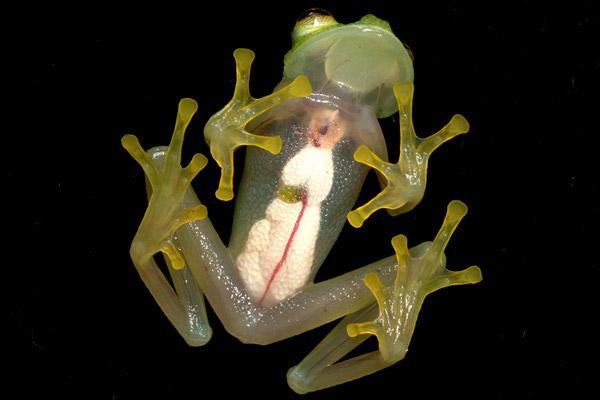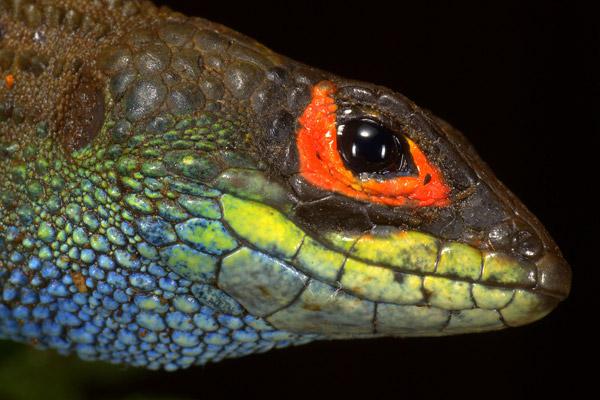We previously documented the collapse of a diverse amphibian fauna following outbreaks of the pathogenic chytrid fungus in the pristine forests of Manu National Park, Peru. In this project we will test an experimental approach to boost the amphibian's defences with naturally occurring skin bacteria that produce anti-fungal metabolites.

The delicate Hyalinobatrachium bergeri is the most abundant species of glass frog. © Alessandro Catenazzi.
Batrachochytrium dendrobatidis (Bd), has been implicated in the extinction of hundreds of species of amphibians. There is an urgent need to develop mitigation strategies for Bd. Modelling and field studies demonstrate that amphibian populations that persist with Bd are associated with low transmission rates that are the result of low amphibian population density and low Bd infection intensity on amphibians’ skins. Recent research has identified naturally-occurring skin bacteria that prevent morbidity and mortality caused by Bd. After experimental exposure to Bd, amphibians that were inoculated with a bacterium known to produce anti-Bd metabolites resisted infection and had higher growth rates and survival than non-inoculated frogs.

An undescribed species of Potamites stream lizard. © Alessandro Catenazzi.
We will apply this mitigation strategy to mega-diverse amphibian assemblages in southern Peru, where we have identified Bd as a driver of catastrophic declines (Catenazzi et al., 2011. Conservation Biology 25:382-391). We will test an experimental approach to mitigate the effects of Bd infection in wild frogs. We will experimentally inoculate frogs with bacteria known to produce the metabolite violacein, a substance that inhibits the growth of Bd. The bacteria naturally occur in the skin of amphibians, and individuals with higher abundance of these bacteria are more resistant to Bd infection. We will establish field cages and compare survival and growth of inoculated vs. non-inoculated frogs over a period of 6 months to measure the impact of beneficial bacteria on Bd infection and frog fitness and survival. We will work at a local biological station and reach out to local NGOs, schools, and Manu National Park with which we have an established working relationship.

